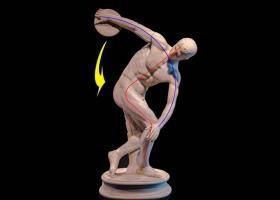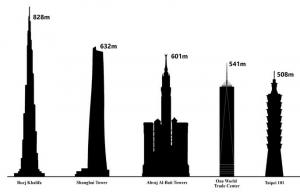Painting The Two Fridas by Frida Kahlo: Meaning and Analysis
Picture The Two Fridas by Frida Kahlo (1907-1954) is a double self-portrait painted in oil and completed in 1939, the year the artist divorced the Mexican muralist Diego Rivera. It measures 173 centimeters long by 173 wide and is currently in the Museum of Modern Art in Mexico City, Mexico.

On The two Fridas we can find two images of the artist. They are both sitting on a bench and holding hands. The Frida on the right side is dressed in a simple Mexican Tehuano-style outfit, and the Frida on the left side wears a white European-style outfit.
Both have exposed hearts, with the difference that the heart artery of the Mexican Frida ends in a small portrait of the artist. Diego Rivera, and the artery of the heart of the European Frida ends up spilling blood in the pubic area, intentionally cut with a scissors surgical
This work represents key and transversal themes of the artist's career such as duality, opposites, the mestizo heritage and the repression of women, mixed with the symbolism that it gives to objects and to its own anatomy.
Frame analysis The two Fridas
Frida Kahlo is defined as a surrealist artist, since the reality that she represents is considered to be in the dream realm.
The most direct interpretation of the painting The two Fridas Frida Kahlo is the representation of the emotional situation that the artist was going through. Despite this, the love break that is evident in the work should not be considered the reason. central but the engine that drives the artist to brilliantly paint her inner world linked to the Exterior.
The following topics are reflected in the table The two Fridas creating an interrelation between all the elements of the table:
Self-portrait and surrealism
Frida Kahlo begins to paint after a bus accident that she suffered at age 18, which forced her to stay in bed for a long time. Self-portraits were Frida's way of expressing her world.
This self-portrait is accompanied by anatomical representations of her vital organs. This, on the one hand, is justified by the large number of operations and medical problems that the Mexican suffered throughout her life; but it is also related to feelings, the spirit and the intangible of being. Both dimensions connect with the physical, the body and the material.
You may also be interested in: Frida Kahlo: biography, paintings, style and phrases.
Duality and its opposites
The theme of duality, that is, the presence of two natures within a being, is recurrent in the works of Frida Kahlo. The duality of being and the opposition of the energies that complement each other is represented through the two Fridas with their hearts exposed but united by arteries, veins and blood.
Costumes and symbols
Frida Kahlo begins to adopt her mixed heritage when she marries Diego Rivera, since it is only under the protection of a husband that a woman could access certain freedoms.
The Tehuana costume represents both the Mexican Oaxacan heritage of her mother, and a call to the matriarchal roots that characterize the towns located on the isthmus of Tehuantepec.
In the frame The two FridasThe Frida on the right wears this Mexican costume but it is also she who holds the portrait of Diego Rivera in her hands. The presence of the opposition between power and submission lucidly shows the dichotomous aspect of the repression of women.
The Frida on the left side of the painting is dressed in a white European-style dress that contrasts with the Mexican Frida. Despite this difference, Frida shows that they are united both emotionally (through the heart) and rationally (through the act of holding hands).
The European costume seems to be inspired by her mother's wedding dress, suggesting a certain immaculate innocence that is stained with the blood that spills from the artery of her naive heart. The cutting of the artery is a premeditated act, which we can observe through the scissors in her right hand.
The place where the spilled blood falls visually balances with the Mexican Frida holding the portrait of Diego Joven at the same height but also symbolizes menstrual pain and bleeding, whose passing character symbolizes the resilience.
See also:
- 15 key works of Frida Kahlo
- Who was Frida Kahlo?

University professor, singer, Bachelor of Arts (Cultural Promotion mention), Master of Literature Compared by the Central University of Venezuela, and PhD candidate in History at the Autonomous University of Lisbon.



